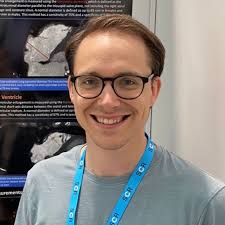Team

Dr David Rotzinger
Médecin associé
Service de radiodiagnostic et radiologie interventionnelle
BH07
Bugnon 46
CH-1011 Lausanne
Fax: +41 21 314 45 54
Contact e-mail
Fields of research
Technological Advancements in Computed Tomography (CT)
Over the past decades, computed tomography (CT) has witnessed remarkable technological advancements, continually pushing the boundaries of performance and versatility. Innovations such as multidetector CT, dual-source CT, and spectral CT have revolutionized clinical imaging practices, enhancing diagnostic accuracy and patient management. Recently, the introduction of photon-counting CT technology represents a significant breakthrough poised to redefine CT imaging in the coming years. Collaborating closely with experts in medical physics and international partners, his research endeavors to evaluate and optimize these cutting-edge CT technologies. Notable contributions include the assessment of image quality metrics and the comparison of novel reconstruction algorithms, demonstrating their potential benefits in clinical settings.
Clinical Cardiothoracic Imaging
In addition to technological developments, his research focuses on advancing clinical applications of cardiothoracic imaging, particularly in the assessment of vascular diseases and pulmonary embolism. Studies have investigated various aspects, including the optimization of contrast medium protocols, prognostic value of imaging findings, and response to emerging healthcare challenges such as the COVID-19 pandemic. Noteworthy contributions include the characterization of vascular abnormalities in COVID-19 patients and the evaluation of low-field MRI for lung nodule assessment, highlighting its potential as an alternative to conventional CT imaging. Through rigorous investigation and collaboration, these efforts aim to enhance diagnostic capabilities and improve patient outcomes in cardiothoracic medicine.
Publications

Dre Chiara Pozzessere
Médecin associée
Service de radiodiagnostic et radiologie interventionnelle
BH10
Bugnon 46
CH-1011 Lausanne
Fields of research
Dr. Pozzessere’s research focuses on chest imaging and its value in the diagnosis and treatment response assessment of pulmonary diseases, such as infectious pneumonia, interstitial lung diseases and drug-related pneumonitis. In collaboration with pulmonologists, oncologists, and immunologists, her research particularly aims to identify radiological features useful for diagnosing pulmonary toxicities in cancer patients receiving targeted therapy (e.g., immunotherapy) and to assess the potential role of artificial intelligence (AI) technology in detection, differential diagnosis, and outcome prediction through machine learning.
Lung nodules and lung cancer screening represent another main research area. Since January 2024, a pilot lung cancer screening program has been ongoing at CHUV in collaboration with Unisanté. Working closely with the pulmonologists and epidemiologists involved in this project, multiple questions regarding lung cancer screening are being addressed.
Low-field MRI in chest imaging is an emerging field of research: although CT is the gold standard for chest imaging, radiation exposure remains a significant concern, particularly for repeated long-term follow-up examinations. Recent advancements in hardware and software have made low-field MRI increasingly promising for lung imaging. Upcoming projects include evaluating the performance of low-field MRI in cystic fibrosis and lung nodules.
The promotion of radiation protection is of particular importance. Her contributions include efforts to reduce radiation doses in chest imaging and the use of large language models (LLMs) to support education, information and communication for patients, students, and healthcare professionals in this field.
Publications

Dr Guillaume Fahrni
Médecin assistant
Service de radiodiagnostic et radiologie interventionnelle
BH07
Bugnon 46
CH-1011 Lausanne
Fields of research
His research focuses on optimizing medical imaging techniques, particularly computer tomography (CT) and magnetic resonance imaging (MRI), with the aim of enhancing diagnostic precision and management of cardiovascular and pulmonary pathologies. His innovative work explores advanced approaches such as photon-counting CT (PCCT) and low-field MRI. These research efforts significantly contribute to the development of advanced methodologies for assessing coronary diseases as well as pulmonary lesions.



